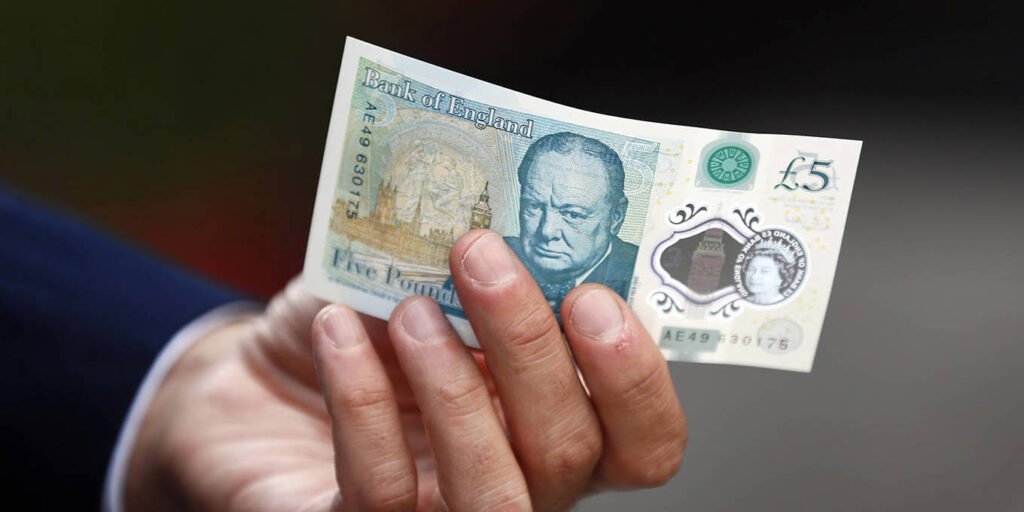US President Donald Trump says he wants to preserve the dollar’s international role as a reserve and payment currency. If that’s true, the history of pound sterling suggests he should be promoting financial stability, limiting the use of tariffs, and strengthening America’s geopolitical alliances.
TOKYO – In April 1925, a hundred years ago this month, Winston Churchill, in his capacity as chancellor of the exchequer, took the fateful decision to return pound sterling to the gold standard at the prewar rate of exchange.
Churchill then, not unlike US Treasury Secretary Scott Bessent now, was torn between two objectives. On one hand, he wanted to maintain sterling’s position as the key currency around which the international monetary system revolved, and preserve London’s status as the leading international financial center. On the other hand, he, or at least influential voices around him, saw merit in a more competitive – read “devalued” – exchange rate that might boost British manufacturing and exports.
Why Churchill chose the first course is uncertain. The weight of history – British economic preeminence under the gold standard prior to World War I – pointed to restoring the monetary status quo ante. The City of London, meaning the financial sector, lobbied for a return to the prewar exchange rate against gold and the dollar. The most articulate opponent, John Maynard Keynes, had an off night when given an opportunity to make his case to the chancellor.
The effects were much as predicted. Sterling regained its position as a key international currency, and the City its position as a financial center. Now, however, they had to contend with New York and the dollar, which had gained importance, owing to disruptions to Europe from the war and the establishment of the Federal Reserve System to backstop US financial markets.
Also as predicted, British exports stagnated. At current prices, they were lower in 1928-29 than in 1924-25, when the decision to stabilize the exchange rate was taken.
Here, clearly, a strong pound and the high interest rates required to defend its exchange rate were unhelpful. But to attribute the British economy’s poor performance entirely to the exchange rate is to jump to conclusions.

Introductory Offer: Save 30% on PS Digital
Access every new PS commentary, our entire On Point suite of subscriber-exclusive content – including Longer Reads, Insider Interviews, Big Picture/Big Question, and Say More – and the full PS archive.
For one thing, the export industries on which Britain traditionally relied – textiles, steel, and shipbuilding – were now subject to intense competition from later industrializers with more modern facilities, including the United States and Japan. The situation was not unlike the competition currently felt by US manufacturing from China and other emerging markets. Then as now, it is not clear that a weaker exchange rate would have made much difference, given the emergence of these rising powers. Nor did the tariffs the United Kingdom imposed in the 1930s revive its old industries.
Moreover, Britain had difficulty developing the new industries that constituted the technological frontier – electrical engineering, motor vehicles, and household consumer durables – even after devaluing the pound in 1931. The US and other countries were quicker to adopt new technologies and production methods, such as the assembly line. Union militancy discouraged investment. Workers with the relevant skills and work ethic were in short supply. Again, these are not unlike complaints heard today from the operators of TSMC’s new semiconductor fab in Arizona or Samsung’s chipmaking plants in Texas.
And, of course, it did not help that the 1930s were marked by trade wars and a decade-long depression.
Notwithstanding these problems, sterling’s position as an international currency survived the 1930s. In fact, the pound regained some of the ground as a reserve and payments currency that it lost to the dollar in the preceding decades. Whereas Britain was broadly successful in maintaining banking and financial stability, the US suffered three debilitating banking and financial crises. The UK maintained stable trade relations with its Commonwealth and Empire under a system of imperial preference that negated the effects of otherwise restrictive tariffs. And it remained on good terms with trade partners and political allies beyond the Commonwealth and Empire, including in Scandinavia, the Middle East, and the Baltics, where monetary authorities continued to peg their countries’ currencies to sterling.
The lessons for those seeking to preserve the dollar’s status as a global currency are clear. Avoid financial instability, which in the current context means not allowing problems in the crypto sphere to spill over to the rest of the banking and financial system. Limit recourse to tariffs, since the dollar’s wide international use derives in substantial part from America’s trade relations with the rest of the world. And preserve the country’s geopolitical alliances, since it is America’s alliance partners who are most likely to see the US as a reliable steward of their foreign assets and hold its currency as a show of good faith.
The US, to all appearances, is going down the opposite path, risking financial stability, imposing tariffs willy-nilly, and antagonizing its alliance partners. What was achieved over a long period could be demolished in the blink of an eye – or with the stroke of a president’s pen. Churchill was aware of the risks. As he put it, “To build may have to be the slow and laborious task of years. To destroy can be the thoughtless act of a single day.”







